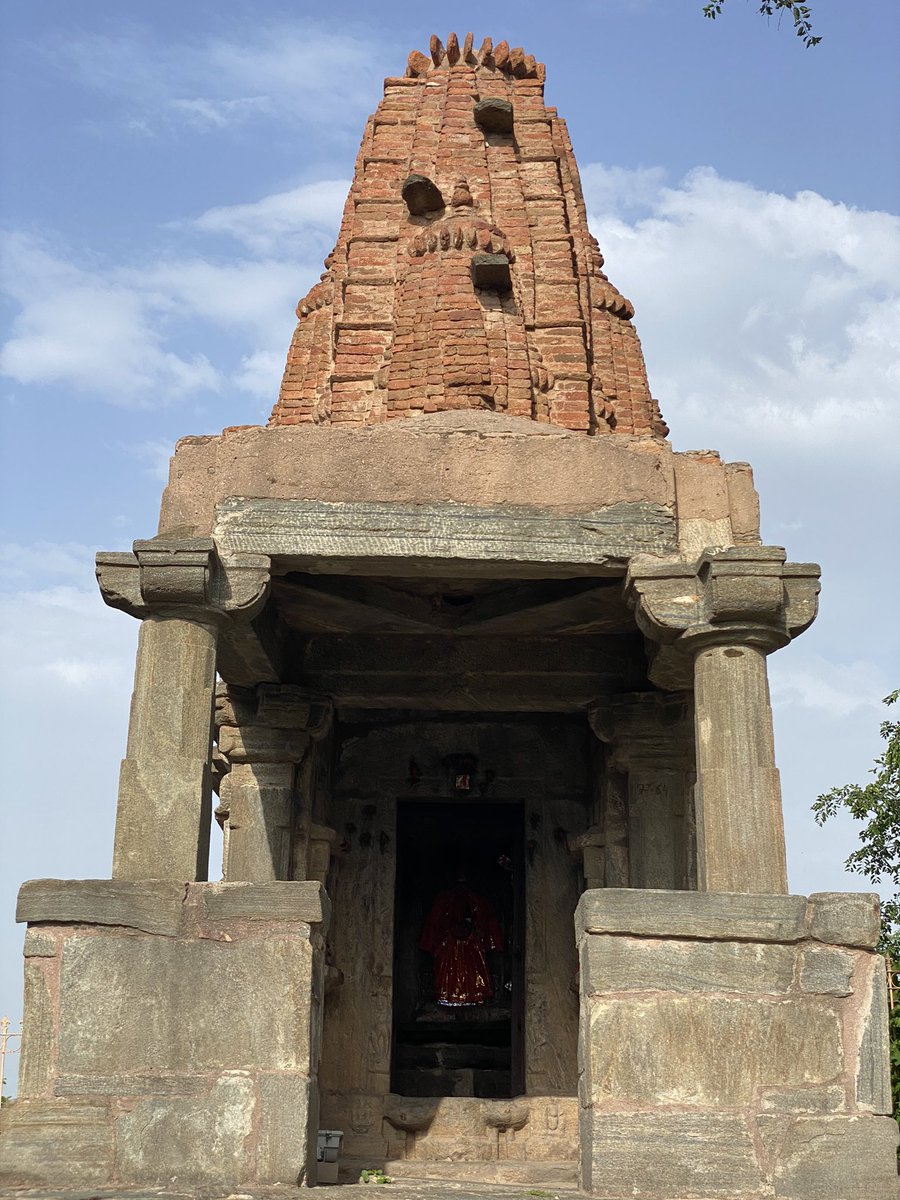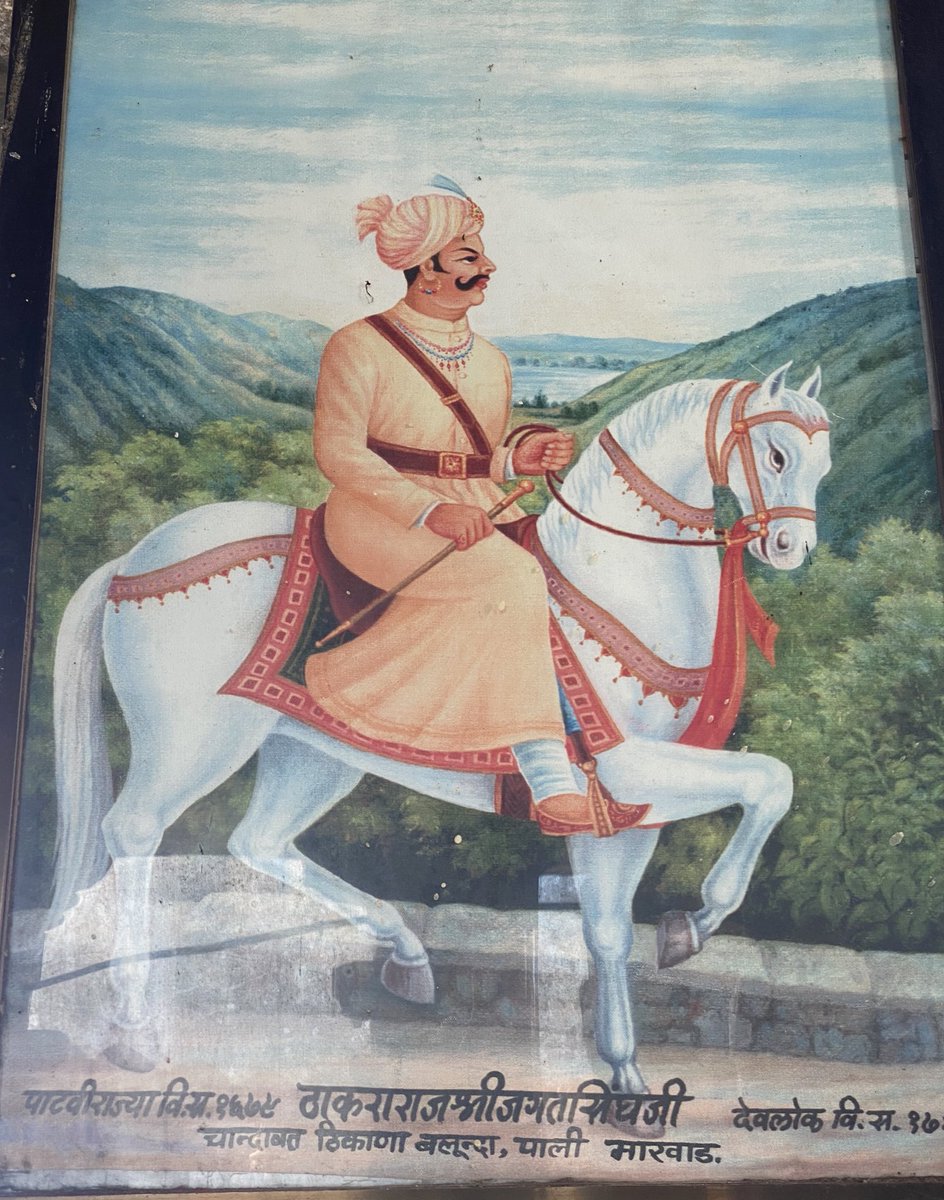
Temples of #Kumbhalgarh
Kumbhalgarh Fort, is spread over 14 sq Km on Aravali hills and protected with long outer fortification wall, series of bastions and fortified gates. This fort has many old temples, both Hindu and Jain. Mandan was the architect of this fort.
Kumbhalgarh Fort, is spread over 14 sq Km on Aravali hills and protected with long outer fortification wall, series of bastions and fortified gates. This fort has many old temples, both Hindu and Jain. Mandan was the architect of this fort.

Unlike the popular legend, this fort doesn’t have 360 temples. The total number of both Jain and Hindu temples was over 70, out of which many still survives.
Majority of the temples were constructed during the reign of Maharana Kumbha and in subsequent period.
Charbhuja Temple - dedicated to four arm deity Charbhuja, this temple is on the hill slope on the right side of Ganesh Temple and it is enclosed by a wall. 

Vedi - built on a raised platform, this three storeyed Yajna Vedi was where Maharana Kumbha performed yajna after completion of the construction of this fort.
The octagonal ground floor was originally open on all sides.
The octagonal ground floor was originally open on all sides.

In the same Vedi complex, there’s a Chattri and Trikuta or Tripurush Temple, dedicated to Brahma, Vishnu and Mahesh, designed by Mandan. 

Neelkanth Mahadev - facing west and known for its huge shivling, this temple was built by Rana Kumbha and renovated by Rana Sanga. It is rectangular in shape and supported by stone pillars. 

Parshvanath Temple - built on an elevated rock on the left side of Neelkanth Mahadev, it has an enclosed wall with image of Ganesh on the lintel of sanctum and a seated image of Parshvanath in the sanctum. 

Kheda Devi Temple - located on the back side of Neelkanth Mahadev, this temple was built in 15th century, with its shikhar built with bricks. There are ruins of two other shrines on either side. On its opposite side, there is an east facing temple, with partly intact sanctum. 



Jain Temples near Vijay Pol - to north of Vijay Pol, there are 2 jain temples on raised platform, one facing west and another facing east, with ruins of a shrine in between.
Another Jain temple is towards Bavan Devra, with seated image of Jain Tirthankar.
Another Jain temple is towards Bavan Devra, with seated image of Jain Tirthankar.

Bavan Devra - This complex has 52 side by side shrines, with 50 in equal size and two main shrines, one in centre of back wall and another in middle, are in larger size. As per the engraved inscription, it was built in 1464 AD. Next to it, is another jain temple, facing north. 



Juna Bhilwara Temple - built on a raised terrace, this temple is currently in ruins, with few images including Tirthankara and female deities still present.
Golera Temples - There are 9 temples in this group of temples, 4 are Jain and 5 are Hindu. Some of Jain temples, built on elevated rocky surface in 15th century has intricate stone carvings and a chamber below the mandap. 



Shiva Temple - facing east and built towards east of Golera on a raised platform, its patly damaged sanctum has shikhar of bricks. 

Surya Temple-it is located near the western section of the fort wall. This Surya Temple is contemporary of Surya Temple of Ranakpur. It's shikhar is currently missing and it is partly restored by ASI. 

Pitaliyashah Temple or Bairath Mata Ka Mandir, this temple was built in 1455 AD and it can be reached after an uphill walk starting near Rana Baori. 

Mamadeo Temple - originally Kumbha Shyam Temple, built by Rana Kumbha, it was here the famous Kumbhalgarh Inscription was engraved by him. Damaged images of Mahishasurmardini, Ganesh and other gods are still present at this temple, some with date of 1515 VS (1457-58 AD). 

Temple near Mamadeo Baori - This north facing temple is near the Mamadeo Baori. It is partly collapsed and has image of Ganesh. 

Small Temples - Just below Langan Baori, there is an east facing temple, two temples near Badva Talao and one on east side of these temples. 

There is a very old Mataji temple in Kumbha Palace and a Bhairav shrine inside Badal Mahal. Hanuman Pol has image of Hanuman, which was brought by Rana Kumbha. 



• • •
Missing some Tweet in this thread? You can try to
force a refresh















